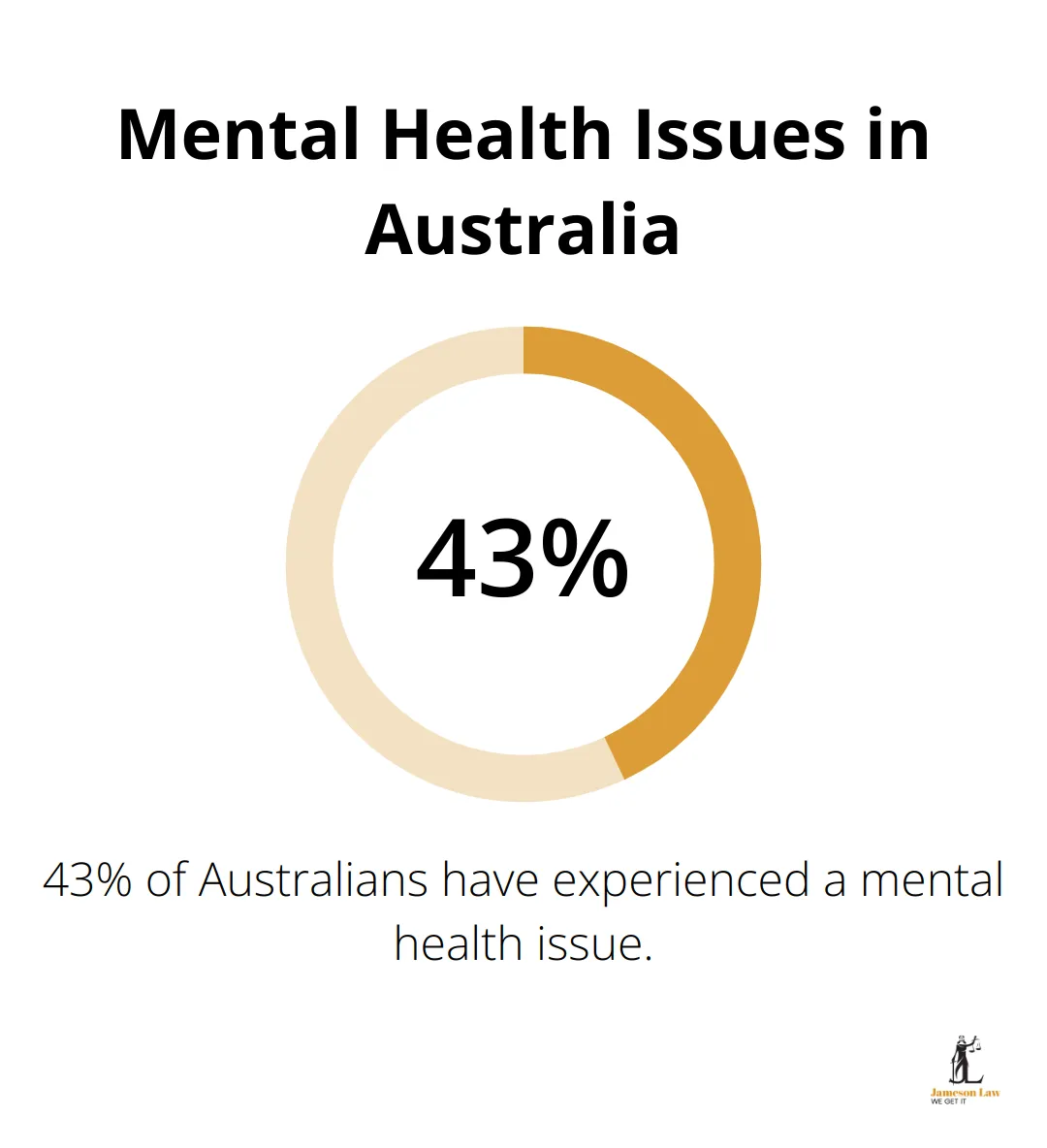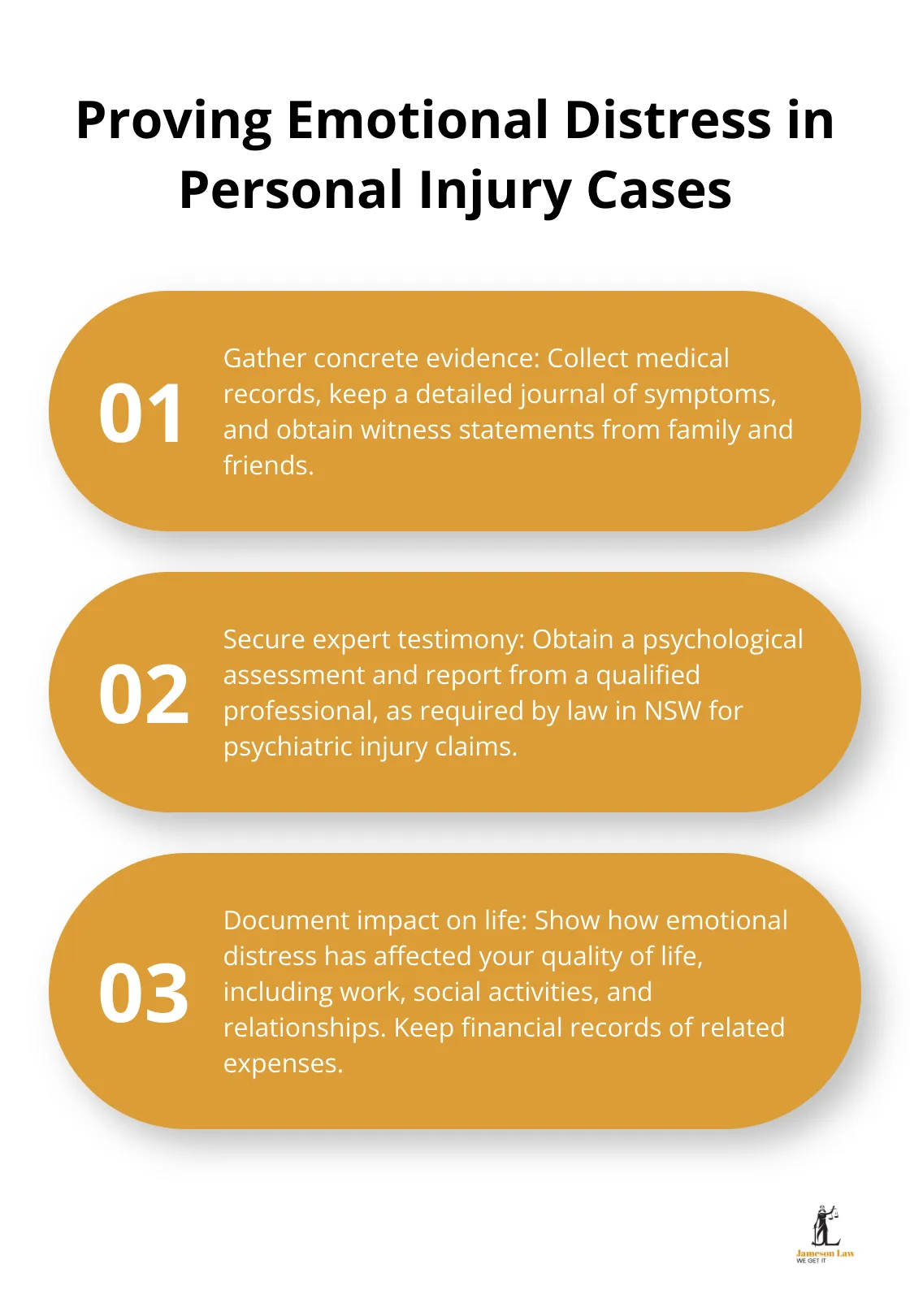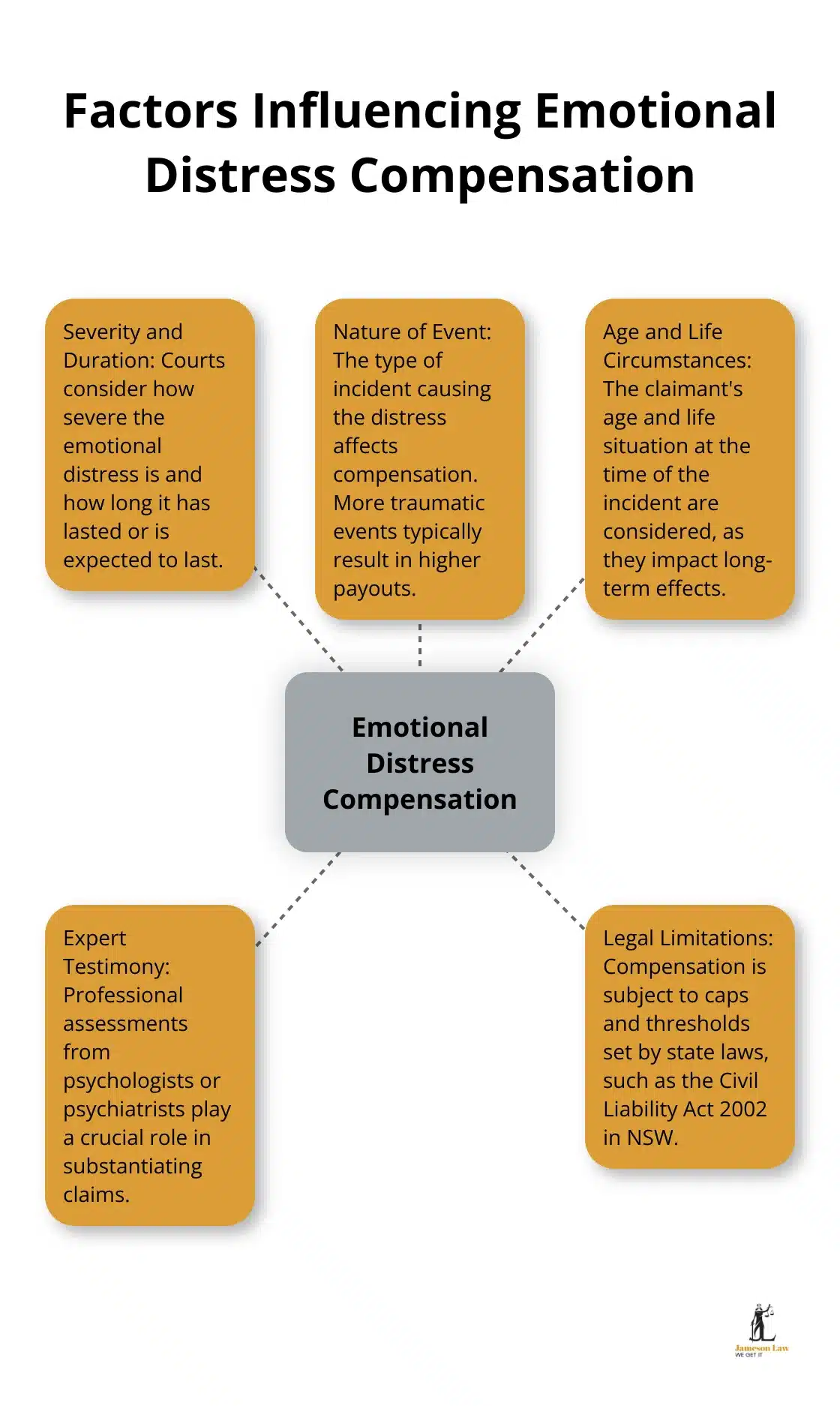Personal injury claims often involve more than just physical harm. At Jameson Law, we frequently encounter clients asking, “Does personal injury include emotional distress?”
The answer is yes. Emotional distress can be a significant component of personal injury claims in Australia, impacting victims’ lives just as profoundly as physical injuries.
This blog post explores how emotional distress fits into personal injury claims, how to prove it, and what compensation you might expect.
What Is Emotional Distress in Personal Injury Claims?
Definition and Legal Recognition
Emotional distress in personal injury claims refers to a recognised psychiatric injury caused by experiencing or witnessing a traumatic event. Australian law recognises it as a valid form of harm that warrants compensation. Courts acknowledge various forms of emotional distress, including anxiety, depression, post-traumatic stress disorder (PTSD), and other psychological conditions resulting from traumatic events.
Prevalence of Emotional Distress
An estimated 43 per cent of the population has experienced a mental health issue, according to the Australian Institute of Health and Welfare. This statistic underscores the prevalence of mental health issues that can stem from personal injuries.

Challenges in Proving Emotional Distress
Unlike physical injuries, emotional distress isn’t always visible, which creates challenges in court. To substantiate claims, individuals should:
- Keep detailed records of psychological symptoms
- Seek professional help
- Gather evidence (medical reports, witness statements)
The Australian Psychological Society emphasises the importance of expert testimony in substantiating claims of emotional distress.
Impact on Quality of Life
Emotional distress can significantly affect a person’s quality of life. It may lead to difficulties in:
- Maintaining relationships
- Performing at work
- Engaging in everyday activities
These impacts can be long-lasting and profound, often requiring extensive treatment and support.
Legal Precedents and Compensation
Australian courts have increasingly recognised the severity of emotional distress in personal injury cases. The NSW government has foreshadowed changes to workers compensation laws that will restrict payments for workplace psychological injuries. This development highlights the evolving nature of compensation for emotional distress claims.
As we move forward, it’s important to understand how to prove emotional distress in personal injury cases. The next section will explore the evidence required and the role of medical experts in these claims.
How to Prove Emotional Distress in Personal Injury Cases
Proving emotional distress in personal injury cases presents challenges, but it’s not insurmountable. The key lies in presenting compelling evidence and expert testimony to support your claim.
Gathering Concrete Evidence
Medical records form the backbone of your case. These should include diagnoses from psychologists or psychiatrists, detailing conditions such as anxiety, depression, or PTSD.
A detailed journal of your symptoms and their impact on your daily life can provide powerful evidence. Note changes in sleep patterns, appetite, and social interactions. Witness statements from family, friends, and colleagues can corroborate your claims, testifying to changes in your behaviour and mood since the incident.
The Critical Role of Expert Testimony
Medical experts play a pivotal role in emotional distress claims. A psychological assessment from a qualified professional provides the court with an objective evaluation of your mental state.
In NSW, the Civil Liability Act 2002 requires psychiatric injury claims to be supported by expert evidence. This means you need a report from a psychiatrist or clinical psychologist diagnosing a recognised psychiatric illness.
Documenting the Impact on Your Life
Show how emotional distress has affected your quality of life. Have you missed work? Withdrawn from social activities? Struggled with relationships? Document these changes meticulously.
Financial records can support your claim. Keep receipts for therapy sessions, medication, and any other expenses related to your emotional distress. Photos and videos can serve as powerful tools, showing visible changes in your demeanour or living conditions as a result of your emotional state.
Timeframes and Consistency
Courts look favourably on claimants who have sought help promptly and maintained consistent treatment. Claims for compensation must be made within 6 months of the date of injury. However, claims can be made within 3 years of the date of injury.
Building a Strong Case
The burden of proof lies with you, the claimant. The more comprehensive and compelling your evidence, the stronger your case will be. Working with experienced legal professionals can ensure no crucial piece of evidence is overlooked.
Consistency in your claims and treatment is paramount. Courts scrutinise the timeline of events and your response to them. Prompt action in seeking help and maintaining a consistent treatment plan strengthens your case significantly.

The next section will explore how compensation for emotional distress is calculated and what factors influence the final amount.
How Much Compensation for Emotional Distress?
Factors Influencing Compensation
The amount of compensation for emotional distress in Australia varies significantly based on several factors. Courts consider the severity and duration of the emotional distress when determining compensation. A person diagnosed with severe PTSD following a car accident might be entitled to compensation to cover treatment costs, lost wages, and in some cases, substantial lump sum payouts.
The nature of the event causing the distress also plays a role. Traumatic events like serious accidents or witnessing a violent crime typically result in higher compensation than less severe incidents.
Age and life circumstances at the time of the incident factor into the decision. Younger individuals may receive higher compensation due to the potential long-term impact on their lives and careers.

Real-World Examples
New South Wales has seen several cases that set precedents for emotional distress compensation. In one notable case, a NSW lady received $350,000 compensation for negligent aesthetic treatment in a hospital. This case highlighted the recognition of severe emotional trauma in personal injury claims.
Another case involved a victim of childhood sexual abuse who was awarded $1.3 million, including a significant portion for emotional distress. This landmark decision underscored the long-term psychological impact of such traumatic experiences.
Limitations and Caps
Australia imposes limitations on emotional distress compensation. In NSW, the Civil Liability Act 2002 sets a cap on general damages, which includes compensation for pain and suffering. As of 2023, the maximum that can be awarded for non-economic loss is currently $761,500 for the most extreme cases.
Additionally, there’s a threshold for non-economic loss claims. To be eligible for damages for non-economic loss in NSW, you must have a permanent impairment of at least 15%. This threshold aims to limit claims for minor injuries.
The Role of Expert Legal Guidance
The complexities of emotional distress claims require expert legal assistance. Experienced lawyers can build strong cases, backed by compelling evidence and expert testimony. They understand how to navigate the legal system and maximise compensation within the established limits.
Documenting Your Case
To support your claim for emotional distress compensation, you should:
- Keep detailed medical records (including diagnoses from psychologists or psychiatrists)
- Maintain a journal of your symptoms and their impact on daily life
- Collect witness statements from family, friends, and colleagues
- Preserve financial records related to your emotional distress (e.g., therapy costs, medication expenses)
These documents will help substantiate your claim and potentially increase your compensation.
Final Thoughts
Emotional distress forms a significant part of personal injury claims in Australia. The legal system recognises the profound impact of psychological trauma on an individual’s life, affecting relationships, work performance, and daily activities. Personal injury does include emotional distress, and the compensation awarded can be substantial, reflecting the severity and long-term consequences of the psychological injury.
Proving emotional distress requires meticulous documentation, expert testimony, and a thorough understanding of the legal landscape. The complexities of personal injury law, especially concerning emotional distress, demand expertise and experience. At Jameson Law, we specialise in personal injury cases, including those involving emotional distress.
We offer a No Win No Fee policy for personal injury claims (ensuring that seeking justice doesn’t add financial strain to your situation). Our team of experienced lawyers understands the nuances of Australian law and how to build a compelling case for our clients. If you’ve suffered psychological trauma due to someone else’s negligence or actions, you have the right to seek compensation.













